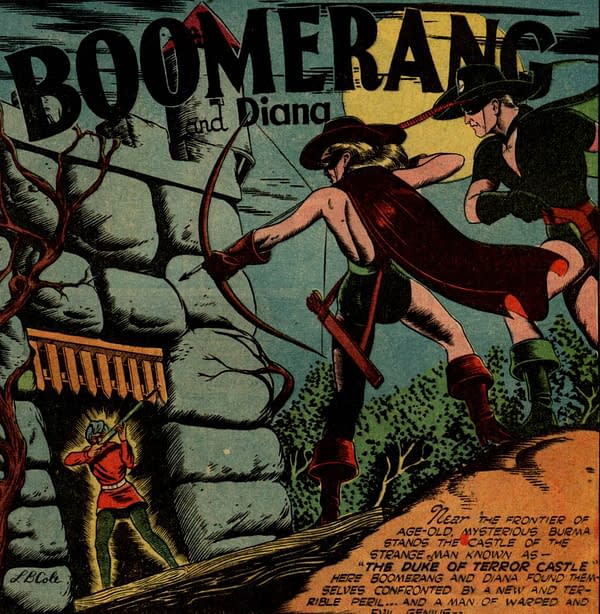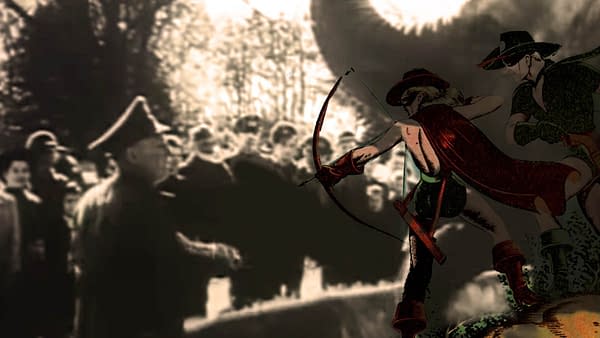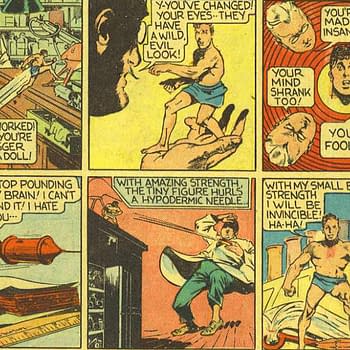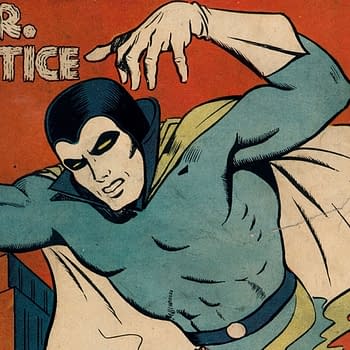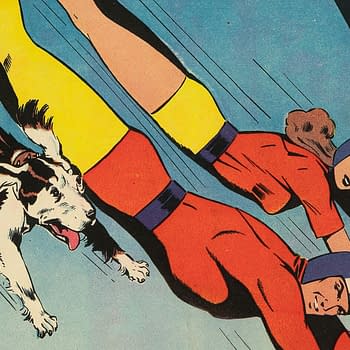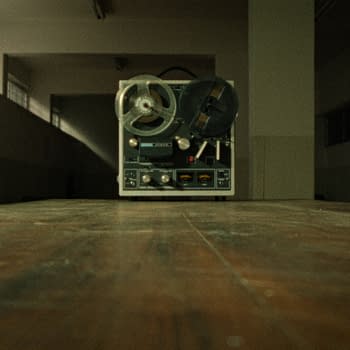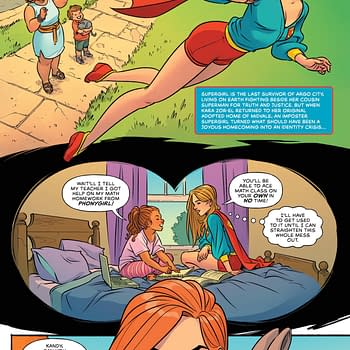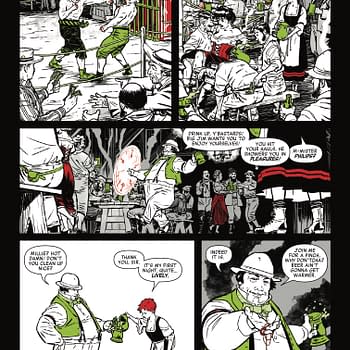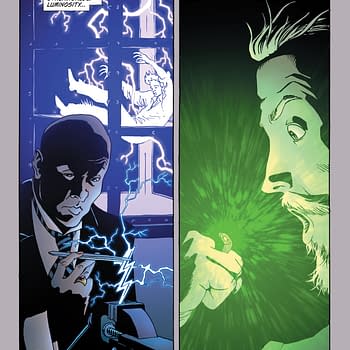Posted in: Comics, Comics History, Recent Updates | Tagged:
Super Weird Heroes v2.2: The Zookeeper of Berlin
If there's one thing that studying comics history has taught me, it's that there's usually a reason for Weird.
If there's one thing that studying comics history has taught me, it's that there's usually a reason for Weird. A series of disconnected events transforms into a streamlined narrative, perhaps a chance meeting with an infamous figure inspires a villain for the ages, or just maybe a brush with a radioactive rat turns into a legend about a radioactive spider.
I see several reminders of this notion in Craig Yoe's Super Weird Heroes Volume 2. And before we get into today's example, I'd be remiss if I didn't commend Yoe for knowing Weird when he sees it. When you think about it, that's not exactly easy when it comics to super-hero comics. Weird has been normalized in this area. Weird is a badge of honor in comics and has been for a very long time. If characters like Spider-Man, the Silver Surfer, or the Blob are mainstream and normal, then what qualifies as weird?
Super Weird Heroes are in the details. They're in the backstory. They're almost intangibly weird sometimes, until you dig an inch below the surface.
Take LB Cole's Boomerang, for example. The character debuted in Terrific Comics #2, cover-dated March 1944. Yoe has the publisher listed here as Temerson/Helnit/Continental, to denote the group of publishing imprints most closely associated with publisher Frank Z. Temerson (and as always, it's slightly more complex than that). I see that the indicia publisher is Et-Es-Go Magazines. It's widely known that Et-Es-Go as a company name was inspired by shorthand for Temerson's sisters Etta, Esther, and Goldie, but I'll include that info here in the interest of completeness.
I'll also throw in a special bonus for Bleeding Cool readers, and reveal that Helnit is named after Temerson's nieces, Helen and Anita (Temerson has yet another imprint called Nita as well). That's just another micro-example of a weird name having an obvious origin, if you dig an inch below the surface.
As for the story itself, Boomering is about an American soldier-spy who uses boomerangs as weapons, and has a female British partner in his espionage adventures. Perhaps not exactly weird at first glance by comic book standards, but it is specific, which typically indicates that it has a specific inspiration.
We don't have to dig too hard to find the root origin of the central characters in this feature. A few months before this series was launched, The Magazine Section, which was the division of the U.S. Office of War Information responsible for distributing propaganda directives to magazine publishers, issued the following:
British Women at War: Now that the mobilization of womanpower for war work is getting under way in the United States, the experiences of our British sisters since September 1939 are of increasing interest to American women. Recognizing this, the Magazine Section of the Office of War Information has prepared a report on the subject…
So, Boomerang's partnership with his capable British companion Diana was simply an example for American girls and women of the strength and worth of this British woman as a capable partner in wartime, as well as a lesson to men that they should be accepting of women as contributors to the war effort.
But the title and setting of this origin story for Boomering and Diana — The Butcher of Berlin — is where this LB Cole comic takes a truly weird turn. It is very likely that LB Cole knew one of the core inspirations for the villain of this story: The Butcher of Berlin, Hugo Drutz.
After attending the University of Kentucky in the U.S., Cole moved onto Humbolt University of Berlin, where he said he was "doing most of my work at the German zoo." Cole returned to the U.S. in early 1941.
This almost certainly means that Cole knew notorious Nazi zoologist Lutz Heck. Heck would go on to experiment with animals during the war. He believed that it was possible to bring back extinct species via selective breeding, among other things. A documentary called Hitler's Jurassic Monsters has been made about this matter, and the 2017 film The Zookeeper's Wife, also includes Lutz.
Cole makes frequent use of animal names by which the Nazi villains refer to their captives in this story. Some of that is not so unusual in such a fictional circumstances… swine, pig, dog, and so on… but the usage here goes well beyond the norm. This may also be a reference to the Warsaw zoo, which Lutz pillaged for animals to use for experiments and which was subsequently used by zookeepers Jan and Antonia Zabinski to hide Jews and Polish resistance fighters from the Nazis. In Cole's story, Nazis are seen pulling resistance fighters and spies from animal-like dungeon cages to be put to death by the Butcher of Berlin. Near the end of the tale, the Butcher says that he has "the strength of many bulls", as he squares off against Boomerang for the final battle.
Cole would later say of his wartime experiences, "I saw animals killed, and I was devastated by it. There was no place for animals in modern warfare."
Cole seems to have been speaking of the transition from horse cavalry to tanks, jeeps, and other machines of war. But the statement does seem to imply a little more than that, perhaps.
Based on Cole's background and experiences, I think it's likely that he based the character Hugo Drutz in part on real-life Lutz Heck and what he may have observed of the man before leaving Berlin.


